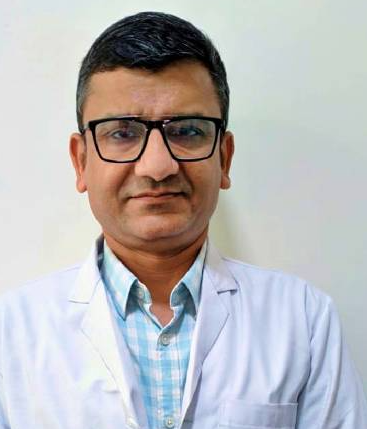Laser Hair Removal Burns: How to Prevent, Treatment & More

Quick Summary
- Laser hair removal burns can be caused by
- Inexperienced laser technicians
- Using the wrong laser settings
- Not following aftercare instructions
- To prevent laser hair removal burns, be sure to
- Choose a reputable laser hair removal clinic
- Ask about the technician's experience
- Get a consultation to determine if laser hair removal is right for you
- Follow all aftercare instructions
Table of Contents
- Understanding Laser Hair Removal Burns
- Why Do Laser Burns Occur?
- How Are Laser Hair Removal Burns Diagnosed?
- Preventive Measures for Laser Hair Removal Burns
- Tips to Remember Before and After Laser Hair Removal
- Treatment of Laser Hair Removal Burns
- Home Remedies For Laser Hair Removal Burns
- When to See a Doctor?
- Takeaway
- Frequently Asked Questions
- References
Unwanted hair can often be a cause of worry for most people. This is where the laser hair removal procedure comes to light and serves as an effective solution to the problem. However, one must be careful about the potential risk of laser hair removal burns and know the best ways to deal with them.
Knowing the factors that increase the chances of laser hair removal burns on the face is important. It allows you to treat them properly and also prevent such burns in certain cases. Read below and explore all the nuances of laser hair removal burns today!
Understanding Laser Hair Removal Burns
Laser hair removal is a popular choice for long-lasting hair removal. It uses laser heat to target and inhibit hair follicles, preventing future growth. Common treatment areas include underarms, legs, face, arms, and the bikini line. Temporary side effects like redness, swelling, and mild discomfort are normal, but burns are rare.
In cases of laser hair removal burns, improper procedure execution is usually to blame. Factors like skin type and laser compatibility can contribute to such burns. To minimise risks, thorough research is essential to find qualified technicians who follow safety protocols.
Why Do Laser Burns Occur?
Laser burns can occur despite the overall safety and success of laser hair removal. One must have an understanding of the causes of these burns to select a better line of action. Below are some potential factors that can lead to a burning sensation after laser hair removal:
Skin Type: Darker skin types are more prone to laser burns due to higher melanin concentrations. This increased absorption of laser energy can generate excess heat, potentially resulting in burns if the laser settings are not properly adjusted.
Prolonged Laser Contact: Prolonged contact of the laser with the skin can lead to burns. Continuous exposure to the laser's heat can exceed the skin's tolerance level, resulting in damage.
Inadequate Cooling: Proper cooling methods, such as the application of cooling gels or cool air during the procedure, help protect the skin and prevent burns. If cooling measures are insufficient or not utilized correctly, the heat generated by the laser may accumulate, increasing the risk of burns.
Incorrect Laser Settings: The laser's intensity, duration, and pulse settings must be adjusted based on the individual's skin type, hair color, and thickness. Incorrect settings, such as using a higher energy level than recommended for a specific skin type, can lead to burns.
Lack of Technician Experience: The skill and experience of the laser technician play a crucial role in preventing burns. An inexperienced or inadequately trained technician may not have the necessary expertise to handle the laser effectively, increasing the likelihood of burns.
Pre-existing Skin Conditions: Certain pre-existing skin conditions, such as sunburn, active infections, or skin sensitivity, can make the skin more susceptible to burns during laser hair removal. It's essential to inform the technician about any existing skin conditions before the procedure.
How Are Laser Hair Removal Burns Diagnosed?
To diagnose laser hair removal burns, healthcare professionals follow a simple process. They visually examine the affected area, looking for signs like redness, blisters, or skin damage. If the burn is severe, they may conduct further evaluation, checking the patient's pain level and determining the burn's depth.
In some cases, additional tests like biopsies or imaging might be necessary. Proper diagnosis is important as it helps determine the right treatment plan and ensures the affected area heals optimally.
If someone suspects or experiences a laser hair removal burn, it is crucial to know the signs of infection. These signs include :
Increased pain
Redness
Swelling
Pus oozing from the burn site
A bad smell around the wound or a fever.
Do Not Pop Burn Blisters
Do not pop blisters that occur after laser hair removal. Popping them can cause infection and harm the skin. It's best to let new skin form underneath the blisters and allow the fluid to absorb naturally. This promotes healing, keeps the underlying skin clean, and prevents infection.
Follow Up With Your Practitioner
After laser hair removal, communicate openly with the practitioner and understand the post-treatment care instructions. If you're dissatisfied or confused about the care received or skin care instructions, seek guidance from the clinic's medical director.
By diligently adhering to these steps, the likelihood of experiencing a burn from laser hair removal can be significantly reduced. However, if a burn does occur, it is essential to ensure thorough care and attention to facilitate proper healing.
Preventive Measures for Laser Hair Removal Burns
One can look for dedicated treatments to deal with laser burns, preventing them in the first place is often preferred. Taking necessary actions before time can significantly reduce the chances of burns and keep you safe. The following are some ways to prevent laser hair removal burns:
Choose a Qualified Technician: A qualified technician with experience in laser hair removal procedures is essential. Researching and selecting a reputable clinic that follows safety protocols and guidelines is vital to reduce the risk of burns.
Patch Test: Before proceeding with laser hair removal, the technician should perform a patch test to determine if a person's skin suits the procedure. The patch test involves treating a small skin area with a laser to ensure no adverse reaction.
Avoid Sun Exposure: Excessive exposure before the procedure can increase the risk of burns. Therefore, avoiding direct sun exposure or using sunscreen with a high SPF to protect the skin is recommended.
Follow Pre and Post-Treatment Instructions: When it comes to laser hair removal burns, following pre and post-treatment instructions is crucial to minimize risks. Here are some important points to keep in mind:
- Adhere to all instructions provided by the technician or healthcare professional.
- Avoid hot showers, steam rooms, or saunas before and after the treatment, as they can increase skin sensitivity.
- After the treatment, apply recommended soothing creams or ointments to the treated area to promote healing.
- Avoid excessive rubbing, scratching, or picking at the treated area to prevent further irritation or potential infection.
- Follow up with any recommended aftercare appointments or check-ups as advised by the practitioner.
- Communicate with the Technician: Communication with the technician is crucial to prevent burns during the procedure. Suppose a person feels any discomfort or heat during the treatment. In that case, they should communicate with the technician to adjust the laser's intensity or stop the procedure.
Tips to Remember Before and After Laser Hair Removal
To ensure the best possible results and minimize the risk of complications, there are certain things that people should do before and after their laser hair removal sessions.
Before Laser Hair Removal
Don't Wax, Pluck, or Bleach Hair: For laser hair removal to be optimally effective, it is essential for the hair follicles to be present within the skin being treated. This is because the laser targets the pigment (melanin) in the hair follicles.
Activities such as waxing, plucking, or bleaching hair can potentially harm or eliminate the hair follicles, thereby reducing the effectiveness of laser hair removal.
Shave the Treatment Area: By shaving the treatment area one or two days prior to the procedure, the laser energy can accurately target the hair follicles beneath the skin instead of focusing on the hair above the skin's surface. This ensures that the laser effectively reaches and affects the hair follicles, enhancing the overall efficacy of the treatment.
Avoid using Products that Irritate the Skin: It is advisable to refrain from using skin-irritating products like perfumes, deodorants, or lotions. These products have the potential to cause irritation to the skin and may interfere with the effectiveness of the laser hair removal treatment.
Inform your Technician: Inform your technician about any medical conditions, allergies, medications, or skin conditions that may affect the treatment.
During the administration of the therapy, it is important for individuals to inform their doctor if they experience excessive heat or extreme cold sensations. Such feedback helps the practitioner to adjust the therapy parameters accordingly.
The doctor can promptly apply skin cooling techniques, potentially halting or reducing the severity of any burn. This proactive approach can effectively mitigate the intensity of burns or even prevent them from occurring altogether.
After Laser Hair Removal
Apply Cold Compresses to the Affected Region: To alleviate swelling and discomfort, it can be beneficial to apply a cold compress to the affected area. The cold temperature of the compress helps to constrict blood vessels, reduce swelling and provide temporary relief from pain.
Avoid Hot Baths and Showers: For a period of 24-48 hours following the treatment, it is advised to avoid hot baths, showers, saunas, and steam rooms. Exposing the treated area to excessive heat during this time can potentially exacerbate skin sensitivity and increase the risk of adverse reactions.
Don't Pick at or Scratch the Treated Area: It is crucial to refrain from picking or scratching the treated area, as doing so can lead to scarring or potential infection. By avoiding any unnecessary contact or manipulation of the treated area, individuals can promote proper healing and reduce the risk of complications.
Treatment of Laser Hair Removal Burns
Treating laser hair removal burns is crucial to minimise pain, prevent infection, and promote healing. The following are some ways to treat burns:
Over-the-Counter Pain Relievers: Pain relievers like ibuprofen or naproxen can prove beneficial in alleviating the pain and reducing inflammation associated with the burn. However, it is advisable to consult with a healthcare professional before using any medication.
Gentle Skin Care: Ensuring proper care for the burned area is crucial for facilitating effective wound healing. One recommended approach is the use of petroleum jelly, such as Vaseline, which can provide moisturisation and protection to the affected skin.
Healing Duration: The healing duration of burns can vary depending on their severity. In less severe cases, it may take a couple of months or more for the burns to fade.
Medical Attention: Severe burns, including second or third-degree burns, may necessitate medical attention and prescription medication. It is crucial to consult a medical professional if the burn is severe or exhibits signs of infection, such as the presence of pus or increased pain.
Topical Antimicrobials and Specialised Dressings: Applying topical antimicrobial ointments and utilising specialised dressings can significantly aid in preventing infection and promoting the healing process of the burn.
Home Remedies For Laser Hair Removal Burns
While seeking medical attention for a laser hair removal burn is crucial, there are some home remedies that can help soothe the affected area in the meantime. Below are some of the most highlighted options:
Cold pack: This can help in the reduction of swelling and discomfort.
Apply a cold compress, several times a day, to the affected region for 15-20 minutes at a time.
Coconut oil: It contains moisturising characteristics that can help soothe and relieve irritation in the skin.
Several times each day, apply coconut oil to the afflicted region.
Honey: It contains antimicrobial properties that can aid in illness prevention.
Cover the burn with a bandage and apply raw honey.
Aloe Vera: It is known for its cooling and soothing properties, making it a popular choice for burn treatment. It can help reduce pain and inflammation and promote the healing process.
To treat laser hair removal burns with aloe vera, cut a fresh piece of aloe vera leaf and squeeze off the gel. Apply the gel immediately to the afflicted region and rinse with cold water after 20-30 minutes. Repeat 2-3 times each day until the burn has healed.
Vinegar: Vinegar possesses antiseptic properties that aid in infection prevention and promote healing. Its astringent properties also contribute to reducing inflammation. When using vinegar as a home remedy for laser hair removal burns, it is recommended to mix it with water in equal parts.
Apply the solution to the affected area using a cotton ball, leaving it on for 10-15 minutes before rinsing off with cool water. Repeat this process once a day until the burn has healed.
When to See a Doctor?
While most laser hair removal burns are mild and can be treated at home, severe burns may require the attention of a medical professional. Here are some instances when it's essential to see a medical professional:
Large or Severe Burns: If the burned area is larger than three inches or the burn is severe, such as a third-degree burn, it's crucial to seek medical attention immediately. Severe burns can cause permanent damage, infections, or scarring and require medical intervention.
Signs of Infection: If the burned area shows signs of infection, such as redness, swelling, increased pain, or pus, it's important to see a medical professional. Antibiotics or other medications may be needed to treat the infection.
Burn on the Face: Burns on the face should be treated with caution, especially if they affect the eyes, mouth, or nose. Medical attention is necessary if the burn is on the face, as it's a highly visible and sensitive area.
Selecting the right professional is essential in preventing laser hair removal burns. It is highly advised to opt for an experienced practitioner who possesses the appropriate technology to ensure a safe procedure.
Takeaway
Laser hair removal is typically a safe and successful process; burns can occur by a variety of factors, such as extended laser contact, laser gel, and darker skin. To reduce the risks of burns, it is critical to follow the practitioner's pre- and post-treatment care recommendations.
Seek medical assistance promptly if a burn occurs, and avoid popping any blisters that may form. Home treatments like aloe vera, coconut oil, and honey can also help to relieve the burn and promote recovery. By taking the required measures and getting immediate medical assistance if necessary, you may reduce the danger of laser hair removal burns while still achieving the desired results.
We at HexaHealth can help you get the best-in-class consultation for treating burns from laser hair removals. Our experts will provide the best-in-class guidance to help you achieve smooth skin without any hassles. Trust us to provide effective solutions for your laser hair removal burn concerns.
Suggested Reads
| Laser for Facial Hair Removal |
Best Facial Hair Removal Creams for Women |
| How to Stop Facial Hair Growth in Females Naturally? |
Best Ways to Remove Facial Hair Permanently |
Frequently Asked Questions
What causes laser hair removal burns?
Laser hair removal burns can be caused by factors such as incorrect procedure, incompatible skin type with the laser, prolonged laser contact, or the use of incorrect settings.
It is crucial to choose qualified healthcare providers to minimize the risk of burns
How common are laser hair removal burns on the face?
Laser hair removal burns on face can occur in some cases. The likelihood of burns depends on various factors, including the individual's skin type, the expertise of the practitioner, and the adherence to safety guidelines during the treatment.
What are the symptoms of laser hair removal burns?
Symptoms of laser hair removal burns may include redness, swelling, blistering, pain, and skin discolouration.
It is important to note that burns are not typical side effects of laser hair removal when performed correctly.
What are some ways to prevent laser hair removal burns?
To prevent laser hair removal burns:
Choose a skilled and reputable professional.
Ensure appropriate equipment and settings.
Communicate any concerns or past reactions.
Avoid sun exposure and tanning beds.
Follow pre-treatment instructions.
Report discomfort during treatment.
Follow post-treatment care instructions.
Can sunscreen be used after laser hair removal to prevent burns?
Yes, sunscreen can be used after laser hair removal to protect the skin from harmful UV rays and prevent burns.
It is recommended to apply a broad-spectrum sunscreen with a high SPF of 30 or above to the treated area and ensure regular reapplication as directed by the sunscreen product.
What should you do if you experience a laser hair removal burn?
Seek medical attention if you experience a laser hair removal burn. Contact the clinic where the treatment was done for guidance and specific care instructions.
They can recommend remedies and treatments to promote healing and minimise complications.
What should be avoided if you have a burning sensation after laser hair removal?
If you experience a burning sensation after laser hair removal, it is advisable to avoid any further exposure to heat sources, such as hot showers, steam rooms, saunas, or direct sunlight.
Additionally, refrain from applying any harsh or irritating substances to the affected area, such as perfumes, deodorants, or lotions.
Can home remedies be used to treat laser hair removal burns?
While home remedies may offer temporary relief for mild cases, it is recommended to consult a medical professional for proper treatment of laser hair removal burns.
Home remedies alone may not be sufficient to address the severity of the burn or prevent potential complications.
What are some medical treatments for laser hair removal burns?
Medical treatments for laser hair removal burns can include topical treatments like antimicrobial ointments or specialised dressings to prevent infection and promote healing.
In more severe cases, healthcare professionals may recommend prescription medications, such as antibiotics or corticosteroids, to address infection, inflammation, or pain.
How long do laser hair removal burns take to heal?
The healing time for laser hair removal burns varies depending on the severity of the burn and individual factors. Mild burns may heal within a few days to a couple of weeks, while more severe burns may take several weeks or longer.
It is important to follow the guidance of a medical professional and practise proper wound care for optimal healing.
Are there any side effects after laser hair removal?
Some common side effects after laser hair removal include redness, swelling, and mild discomfort in the treated area.
These side effects are typically temporary and subside within a few hours to a few days. It is important to note that burns are not common side effects when the procedure is performed correctly by a qualified professional.
What are the potential long-term effects of laser hair removal burns?
Potential long-term effects of laser hair removal burns can include scarring, skin texture changes, or hyperpigmentation in the treated area.
However, when performed by experienced professionals and with appropriate safety measures, the risk of long-term effects is minimal.
References
All the articles on HexaHealth are supported by verified medically-recognized sources such as; peer-reviewed academic research papers, research institutions, and medical journals. Our medical reviewers also check references of the articles to prioritize accuracy and relevance. Refer to our detailed editorial policy for more information.
- Prohaska J, Hohman MH. Laser Complications. [Updated 2023 Aug 28]. In: StatPearls [Internet]. Treasure Island (FL): StatPearls Publishing; 2023 Jan-.

- Vaidya T, Hohman MH, Kumar D D. Laser Hair Removal. [Updated 2023 Jul 25]. In: StatPearls [Internet]. Treasure Island (FL): StatPearls Publishing; 2023 Jan-.

- Balyen L. Inadvertent macular burns and consecutive psychological depression secondary to Alexandrite laser epilation: A case report. Saudi J Ophthalmol. 2019 Jan-Mar;33(1):105-108. doi: 10.1016/j.sjopt.2018.03.006. Epub 2018 Apr 11. PMID: 30930674; PMCID: PMC6424673.

- Vano-Galvan S, Jaen P. Complications of nonphysician-supervised laser hair removal: case report and literature review. Can Fam Physician. 2009 Jan;55(1):50-2. PMID: 19155367; PMCID: PMC2628842.

- Shirkavand A, Ataie-Fashtami L, Sarkar S, Alinaghizadeh MR, Fateh M, Zand N, Djavid GE. Thermal damage patterns of diode hair-removal lasers according to various skin types and hair densities and colors: a simulation study. Photomed Laser Surg. 2012 Jul;30(7):374-80. doi: 10.1089/pho.2011.3152. Epub

- Kacar SD, Ozuguz P, Demir M, Karaca S. An uncommon cause of laser burns: the problem may be the use of gel. J Cosmet Laser Ther. 2014 Apr;16(2):104-5. doi: 10.3109/14764172.2013.877748. Epub 2014 Feb 10. PMID: 24410656.

- Hendricks K, Nxumalo CT, Makgobole MU, Ghuman S, Jacobs D, Mpofana N. Evaluating the effectiveness of laser hair reduction using a home use laser in comparison to a Diode laser. PLoS One. 2023 May 26;18(5):e0286162. doi: 10.1371/journal.pone.0286162. PMID: 37235570; PMCID: PMC10218747.

- Khalkhal E, Razzaghi M, Rostami-Nejad M, Rezaei-Tavirani M, Heidari Beigvand H, Rezaei Tavirani M. Evaluation of Laser Effects on the Human Body After Laser Therapy. J Lasers Med Sci. 2020 Winter;11(1):91-97. doi: 10.15171/jlms.2020.15. Epub 2020 Jan 18. PMID: 32099633; PMCID: PMC7008747.

- Goel A, Rai K. Methods to Overcome Poor Response and Challenges of Facial Laser Hair Reduction. J Clin Aesthet Dermatol. 2022 Jun;15(6):38-41. PMID: 35783561; PMCID: PMC9239120.

Last Updated on: 27 December 2023
Reviewer

Dr. Aman Priya Khanna
MBBS, DNB General Surgery, FMAS, FIAGES, FALS Bariatric, MNAMS General Surgery
13 Years Experience
Dr Aman Priya Khanna is a highly experienced and National Board–Certified Laparoscopic, GI, and Bariatric Surgeon with over 13 years of clinical expertise.
He is widely regarded as one of the best bariatric surgeons in Ahmedabad, ...View More
Author

Charu Shrivastava
BSc. Biotechnology I MDU and MSc in Medical Biochemistry (HIMSR, Jamia Hamdard)
3 Years Experience
Skilled in brand marketing and SEO-driven medical content that educates and engages patients, healthcare professionals, and the general public. With medical writing and proofreading expertise, she ensures accuracy,...View More
Expert Doctors (10)
NABH Accredited Hospitals (5)
Latest Health Articles
Related Treatments


















